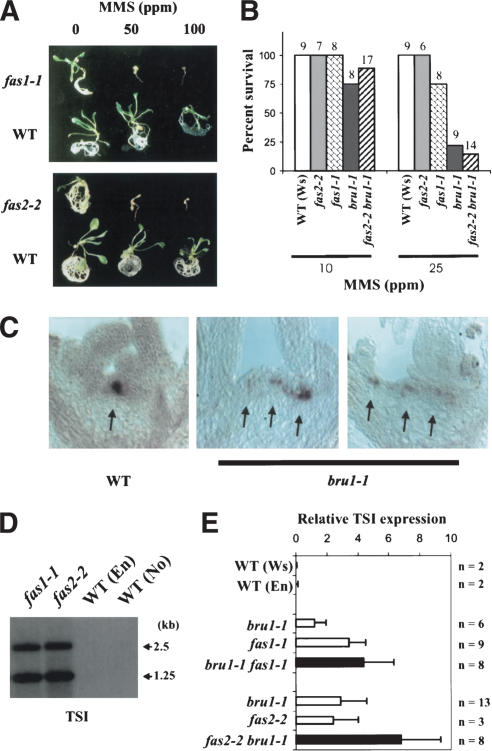Figure 6.
Functional similarity between bru1 and fas1 or fas2 mutants. (A) Sensitivity of fas1-1 and fas2-2 and their respective wild types En and No (WT) to MMS. Ten seedlings were tested in each treatment, and representative seedlings are displayed. (B) Sensitivity of mutants to low concentrations of MMS. The number of seedlings used for each treatment is indicated above the bars. The survival rates after each treatment are shown. (C) Distorted shoot apical meristem and misexpression of the WUSCHEL gene in bru1-1 (middle and right) compared with wild type (left). Localization of WUS mRNA in shoot apical meristems of wild type and bru1-1 is visible as dark purple signals (arrows). (D) fas1-1 and fas2-2 activate transcriptionally silent pericentromeric repeats (TSI). An RNA blot with equal loading of total cellular RNA (as verified by EtBr-staining of rRNAs) was hybridized with the TSI-specific probe as in Figure 5C. (E) Quantification of TSI expression in bru/fas double mutants. Samples of total RNA of wild type (WT), bru1-1, fas1-1, fas2-2, and their double mutants were analyzed by RNA blotting with a probe specific for TSI and AtRanBP1a. Means and standard deviations of TSI RNA levels relative to AtRanBP1a mRNA are shown. The numbers of plants tested (n) are indicated. Expression levels in the double mutants were compared to single mutants segregated from two parental lines (middle three and bottom three).

